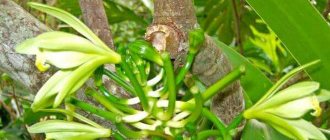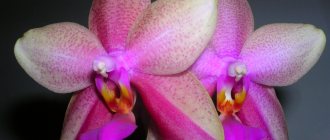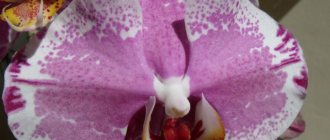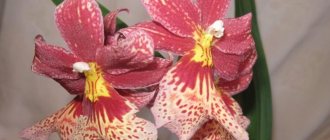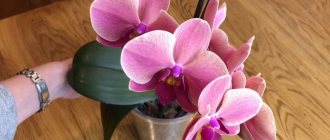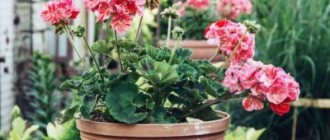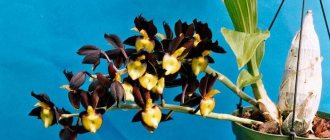Orchids captivate everyone from the first meeting. The Sogo phalaenopsis genus fascinates with its luxury. But the plant requires special conditions for care. Have you acquired this beauty? We'll show you how to take care of it properly. We will also reveal the features of the subspecies, which cannot be neglected if you are planning to become a breeder. At the end, we will talk about the diseases of this wonderful plant. After all, it is better to prevent them than to treat them.
History of origin
Phalaenopsis Sogo (Phalaenopsis Sogo from lat.) is a hybrid species of orchids, crossed on the basis of 14 plants of the same family. Breeding experiments lasted from 1962 to 2003.
This is interesting: the ancestors of the flower mostly grew in Australia. Some of them are from Southeast Asia and the Philippines.
In the 19th century, the owner of the botanical garden, who also had the title of professor in the field of plant growing, Karl Ludwig Blume, traveled around the Malay Archipelago. And it was there that I first saw a wonderful creature. Its exotic buds, when opened, resembled bright butterflies. This is how the first phalaenopsis was discovered. On later dates, other cases of people meeting these beautiful representatives of the flora were recorded. Gradually, other subspecies of the Orchid family were revealed to the world, from which the Sogo genus was developed. The path to its creation lies entirely on the shoulders of scientists.
Description of appearance
Miniature grex belongs to epiphytes: in natural habitats it grows on stones, trees, in forests and gorges with high humidity.
Main characteristics of the variety:
- The height does not have strict limits, but in some subspecies it can reach 80 cm. Most individuals are small in stature, but there are also real giants. With regard to the latter, it is impossible to do without additional support to support the trunk. Peduncles with a large number of buds hang.
- Mature phalaenopsis has 6 leaves. Dwarf groups have small plates - up to 10 cm in length and 5 cm in width. The shape is oblong, typical of Orchids. The structure is dense and a little rough.
- Arrow dimensions vary depending on the variety.
- Most of the representatives of this species have flowers up to 8 cm in diameter, and dwarf ones - 5 cm. The color ranges from white to purple or deep purple.
Variety of species
Currently, there are about 70 main varieties and an incredible number of phalaenopsis hybrids bred by breeders. The following species are mainly common in home floriculture.
Spotted
The second name of the variety is Maroon Moths (due to the unusual spotted color). The shape of the flowers resembles a butterfly. Diameter - 8 cm. Color of the main background - cream, white, yellow, white. The petals are decorated with contrasting, irregularly shaped spots.
The leaves of the variety are dense, leathery, dark green in color, with a waxy sheen on the surface. The shape of the leaf blade is oblong-oval. The average height of the plant is 100 cm.
Cambridge
The main advantage of the Cambridge variety is its huge flowers, up to 11 cm in diameter. The color of the petals is snow-white, the center is bright yellow. It has long flowering.
Schiller
A large plant up to 30 cm high. The width of the leaves is about 6 cm. Like all phalaenopsis, the flower resembles a butterfly, but the structure of the petals has some features: sepals of a regular elliptical shape, diamond-shaped petals, curved back. The diameter of the flowers is 8-9 cm. The lip is triple, with a round center, a kind of anchor at the end and curved sides. The color of the flowers, depending on the variety, is white, pink, purple. Under suitable conditions, the species blooms in a cascade.
Sogo
The variegated Sogo species stands out among other phalaenopsis due to its original leaf color. They can be red-green, white-green, green-violet. The color stripes are arranged differently.
Flower colors are also widely available. The most common varieties are those with bright yellow, purple, lilac, and white petals.
Liodoro
A hybrid obtained by crossing the varieties Phalaenopsis Deventeriana and Phalaenopsis violacea. The author of Liodoro is American breeder Rex Smith. During its existence, since the late 80s, the hybrid has won 30 different awards in the field of floriculture.
Stem height is 45-50 cm. The leaves are elongated, elongated, up to 25 cm long, 10-12 cm wide. The flower is shaped like a star with a diameter of up to 7 cm. The color of the petals is yellow, purple, pink. Some varieties have petals decorated with small splashes of red.
Mini Mark
A miniature hybrid up to 20 cm high. The leaves are elongated, up to 10-15 cm, bright green. The flowers are small, 3-4 cm in diameter, elegant in shape. The petals are white, with multi-colored specks. The lip is bright orange.
Sakura
The variety was bred in Central Asia. It received the name Sakura due to the similarity of the flowers with the Japanese cherry. The stem of the plant is straight, about 60 cm high. The leaves of the species are large, rich green, forming a leaf rosette from which shoots and roots are formed.
The peduncle is 30-45 cm high. The flowers are light pink, with a lilac edging along the edge of the petals. The core is yellow or orange.
What is the difference from other types of orchids?
Not only are the exotic flowers of this group full of colors, but the leaves also have interesting patterns and combinations. Individuals with plain plates are rare. This is the key feature of Sogo - it belongs to variegated plants, which are characterized by uneven color.
The most common leaf blades are those with white, red and purple stripes. The lines can be very thin, barely noticeable, or wide, behind which greenery appears. The placement also fluctuates: strictly in the middle, along the edges, on one side.
This unusualness, combined with variegated buds, most attracts attention to the phalaenopsis of this group. Due to the long peduncle, the ovaries are arranged in a cascade, which looks very impressive. Depending on the subspecies and age, the arrows can reach 50 cm in length.
This is interesting: Sogo is often confused with the Big Lip group, but the latter is distinguished by its original lip, although the sepals are full of bright patterns.
Rare Phalaenopsis Sogo: Rose, Vivienne, Grape
Increasingly, exotic plants look at us through the glass windows of apartments and offices. Most of them delight the eye with long flowering, and the coloring of the flowers is usually very variegated.
Among the large number of overseas plants, a special place is given to orchids and, in particular, phalaenopsis. It is this type of epiphyte that is most often grown at home by both novice gardeners and specialists in this field.
Recently, it has become fashionable to present a bouquet of phalaenopsis in a pot instead of a bouquet for any occasion, and it is not necessary to choose among the flowering options. Plants with decorative leaves will surprise you no less than an orchid with the most colorful flowers.
Description
One of the types of phalaenopsis Sogo is Gotris.
Most Phalaenopsis Sogo There are also varieties with plain leaf blades.
A special feature of the Sogo variety is that it belongs to variegated plant varieties. What is it?
The term variegated refers to plants that have uneven foliage color .
A wide variety of tones and shades can be present on the leaf plates of the trunk; the most common leaves are:
- Green-white;
- Red-green;
- Green-violet.
It is the colored leaf plates that attract the attention of a plant of this type.
The colors on the leaves can be very diverse; nature decorated them at its discretion.
There are only thin stripes of unusual shades , and sometimes it is the greenery that appears as the edging.
The colored stripe can run strictly in the middle, or it can frame one edge of the sheet with a thin line.
Orchids in combination with colorful and fragrant flowers will be an excellent holiday gift or just for a good mood.
The Sogo standard has species with white-green leaves , but there are other differences.
Existence in nature
The Sogo hybrid is a derivative of crossing many varieties of phalaenopsis , so we can safely say that distant relatives of the species are distributed throughout the Asian continent.
The hybrid itself is not adapted to the natural conditions of tropical rainforests; it is much more suitable for living in a cozy home among people .
The phalaenopsis variety Sogo was created in the early 2000s and was warmly received at one of the plant hybridization exhibitions.
Soon it
spread widely throughout the world , and Europeans especially loved it.
The standard is represented by a wide range of colors; the most common are Sogo phalaenopsis with variegated flowers :
- Bright yellow;
- Lilac;
- Light lilac;
- White.
Interesting! Each of them has a bright, slightly elongated lip, which always stands out against the general background and is one of the distinctive features of the variety.
Hybrid characteristics
Before you go in search of a hybrid that has sunk into your soul, it is worth studying its indicators so as not to make a mistake when choosing a standard in a flower shop or greenhouse.
The Phalaenopsis Sogo orchid has the following external characteristics:
- The height of the trunk can grow to medium size ; together with the peduncle, this epiphyte develops up to 80 cm, but there are many dwarf and mini species of this plant; Phalaenopsis Sogo is medium in size, the photo shows an adult specimen of Vivienne.
- An adult plant has 5-6 leaf blades , of medium size; mini-phalaenopsis have small leaves 8-10 cm long, and their width is no more than 5 cm;
- The arrow with buds develops depending on the variety , in ordinary ones it reaches 50 cm in length, mini-phalaenopsis have shorter peduncles;
- Sogo will also vary in the diameter of its flowers: most representatives of the variety have medium-sized flowers, reaching 6-8 cm in diameter, mini varieties are smaller - 4-5 cm in diameter.
Interesting! Phalaenopsis bloom in different colors, often one flower can combine several shades.
The phalaenopsis orchid is an epiphyte, which is why it needs careful care and watering; the roots should not be allowed to dry out, and excess moisture will only harm the trunk. Planting in the right soil and the right container will become an indispensable assistant for the gardener; the main thing is to choose everything correctly:
- Usually they start from the ground. For the Sogo hybrid, it is worth choosing a substrate consisting of pine bark of different fractions . This particular species will be ideal for growing this variety of orchids, but planting the trunk in sphagnum is not recommended. Sometimes even experienced gardeners cannot cope with such soil, and even more so for beginners;
- Particular attention should be paid to the container in which you will plant the trunk. The best option is considered to be a pot made of transparent plastic; in such a container it is very convenient to monitor the condition of the plant’s root system, and the substrate itself is clearly visible. The disadvantage is that it is not very presentable, which is why many people choose wicker baskets or ceramic flat bowls as an alternative. To support the trunks in such containers, they are usually tied to some kind of support;
- Place the transplanted phalaenopsis on a windowsill with sufficient light . With proper care, the plant will soon thank you with flowering.
Advice! Do not plant orchid trunks in pure sphagnum and do not add moss to the combined substrate if you have never dealt with it before. You need to take special care of the moss: if it is over-moistened, rot may occur on the roots of the phalaenopsis, and if it is too dry, it will shrink so much that it will simply crush the root system of the flower.
Care
The Sogo orchid hybrid is classified as a more heat-loving variety of phalaenopsis; for its cultivation and subsequent flowering, it is necessary to adhere to certain rules:
- The most suitable temperature for keeping the trunk in the summer should be at least 23 degrees during the day, maximum 28. At night, the thermometer should show no more than 20. During the rest period, Sogo will feel comfortable at 16-18 degrees;
- The plant will require high humidity , here you should start from the statement: the higher the temperature, the more often you need to spray. For normal development, 70% humidity is required in summer. In winter and autumn, 60% will be enough; Like all phalaenopsis, Sogo requires proper and timely care. Pictured is Sogo Vivien Variegata.
- Watering is carried out as the substrate dries, but you should not overdry the soil, this can have a detrimental effect on the root system of the flower. Abundant watering will also not bring any benefit; on the contrary, it can cause rotting of the roots, which over time can spread to the leaves of the trunk;
- fertilized in the same way as other orchids. During the dormant period - once a month, and during flowering - every two weeks. At the same time, it is important not to overfeed the plant; this can negatively affect budding, flowering and the general well-being of the trunk.
After purchasing, you should not immediately replant the trunk; this is done as a last resort when the plant :
- Has diseases of the root system;
- Suffered from pests;
- An insufficient number of roots have grown and they are unable to ensure the normal functioning of the trunk.
Advice! After the purchased standard has been brought home, it is advisable to immediately check it for the presence of pests and diseases. The second can be seen with the naked eye, but pests are more difficult. To detect them, lower the plant pot into a container of water that covers more than ¾ of the pot. After 15-20 minutes of this bathing, all the pests will come out.
Bloom
The Sogo variety blooms for quite a long time , usually the flowers cascade down the peduncle.
To stimulate this process, it is necessary to create certain conditions:
- To do this, you should try lowering the temperature and reducing watering in winter;
- When the spring sun appears, the substrate is moistened , as before, sprayed with a spray bottle;
- Immediately after flowering, the peduncles are not trimmed ; usually, after a short period of time, the arrow again begins to produce buds and delight the gardener.
to increase the number of Phalaenopsis Sogo trunks on the windowsill, all of which are based on separating the baby from the main plant.
Young shoots may appear:
- From a dormant bud on a peduncle;
- From a dormant bud on a stem.
Each of them will grow and develop during the first months on the maternal trunk. Only after the appearance of 3-4 leaf blades and at least 3 aerial roots can the young be planted for individual cultivation.
Phalaenopsis Sogo: Rose, Vivien, Grape
Sogo hybrid has many varieties, the most popular and in demand are:
- Jessica is about 50 cm high, its flowers have an unusual color, the purple core becomes completely white towards the edges, the lip is large, rich pink. The flower can be up to 6 cm in diameter; Sogo jessica.
- Sogo Vivien felnopsis is especially good during the flowering period. The standard is classified as a variegated hybrid; it can be up to 30 cm high including the peduncle. The main petals are white with pink veins, which especially attracts attention to the plant. The lip has a dark crimson color; Sogo Vivien Variegata.
- Gotris is also classified as a miniature variety; the height of the stem will be small, up to 25 cm, and it blooms with bright yellow flowers with purple dots on all petals. Crimson lip;Sogo Gotris 'Flora Ark'.
- Relax is especially distinguished ; it is valued for its aroma and unusually beautiful flowers; they are almost completely crimson in color; Sogo Relex.
- Sogo Bianca also belongs to mini-hybrids ; the variety has the most delicate color of flowers, subtle shades of pink and droplets of yellow flowers softly lie on a milky tone. The lip has a yellow core with a white edge; Doritaenopsis Sogo Bianca.
- Phalaenopsis Sogo Rose has waxy flowers of a rich crimson color; the lip is almost invisible against the background of the petals. It blooms for a long time, each flower pleases the eye for more than a month; Sogo Rose stands out with its enchanting color.
- Another original Sogo Pony is distinguished by the color of its petals. The main yellow color is heartily flavored with large red dots. The lip is crimson, with a white edging. The flower looks like a fairy tale. Phalaenopsis Sogo Pony 'YS'.
Other varieties are no less beautiful and are also purchased quite often.
The Sogo hybrid has many varieties and colors , but mini varieties predominate.
Watch the video description of the phalaenopsis Sogo Vivien: an example of healthy Sogo Rose:
review of the flowering of the phalaenopsis Sogo Grape orchid:
instructions on how to plant phalaenopsis Sogo: The Sogo hybrid has many varieties and colors, but mini-varieties predominate.
Source: https://komnatnie.com/orhid/phal/sortaf/redkies/sogo.html
Sogo orchid varieties, photo
Like every independent genus of the Orchid family, this one also produces “babies”. Groups of plants in this category have a lot of common features, but at the same time there are differences, which will be discussed below.
Relax
A variety that really surprises even experienced amateur plant growers. Flowers with “waxy” petals of a rich beet color have a scent similar to lilies, but not so strong. In the Russian Federation, this plant is supplied from Asia, but it is extremely difficult to find it on the open market. To acquire one, you will have to try and use the help of specialized groups or Internet sites that distribute phalaenopsis.
Sogo Relax is an unpretentious orchid and its care requirements are not much different from its counterparts grown in Holland. Any person who has positive experience in growing epiphytes will be able to cope without any problems.
This is interesting: this subspecies tends to grow arrows to extend the flowering period. Sometimes the process occurs for 7-8 months in a row.
Lawrence
It has red, non-fading dense petals with yellow edges. Sometimes the light tone is very narrow, and sometimes it takes up a significant part. The spots closer to the lip look more like stripes, and then disperse into dots. Some cultivators produce fragrant specimens, but this difference is not typical for all, as it strongly depends on the breeding conditions.
The arrow is branching, which causes a lush crown during flowering. The scarlet lip sometimes has a white or purple edge. The sepals are wide and the bud has a regular shape.
Sogo Lawrence is an orchid with blurry light spots on the leaf blades. This looks more than original and for the most part is characteristic only of this variety.
Yukidan
An elongated and slender plant with white or pink petals. The diameter of the open buds ranges from 12 to 14 cm. The lip is figured and resembles a brooch. The leaf blades are bright green, wide and dense, decorated with a longitudinal light vein in the middle.
The Sogo Yukidan orchid, as seen in the photo, looks like an elegant Asian figurine. The arrows are full of bright “moths” and bend to the ground under their weight. The petals are rounded and wide, shimmering in good light, like sugar.
This is interesting: the subvariety belongs to Doritenopsis - flowers obtained by crossing Orchids such as Doritis and Phalaenopsis.
Vivien
This plant has two features that significantly distinguish it from its other counterparts: the color of the leaves and petals. They are unique in their kind. Pink, lilac or purple flowers have veins that are a couple of shades darker and shimmer with iridescence. The dark green plates are bordered by wide, uneven light stripes. The sepals are full, and the petal is darker than the overall color.
Pony
Bright yellow flowers with large burgundy spots. The lip is crimson with a white border. The smell is pleasant and unobtrusive. Branched arrow. The green leaf blades sometimes have subtle light spots, like the Lawrence variety. As you can see in the photo, the rich open buds really look like exotic butterflies, standing out against the background of any plants.
Gotris
A dwarf beauty with an arrow no longer than 25 cm. The flowers are also not impressive in size, but they delight with bright colors and a delicate aroma. The yellow petals from the center of the bud have a red or pink tone that gradually dissipates.
Lip with a white tip and a small “nose”. The ovaries on the arrow are staggered, and it does not bend much under their weight after opening. In general, the plant resembles the Lawrence variety, but has significant differences in size and color type.
Rose
Phalaenopsis of this subvariety resembles Relax in appearance, only the tone of the petals is darker. “Waxy” buds are distinguished by long-term flowering, and against their background the lip practically does not stand out, only the edge is white. In some individuals, the sepals have a border and look as if the main light background, and the upper one consists of nearby large spots.
This is interesting: this plant belongs to the novelti variety - taking into account the conditions necessary for its healthy life, it blooms almost all the time.
Grape
The voluminous and slightly elongated petals of this variety are glossy and dense to the touch. The sepals are more shaped like the green plates of orchids than the usual buds. The lip stands out a little against the general deep lilac background with an orange color. Some subspecies come with a light thin border or a palette closer to cherry shades.
The younger the plant, the fewer ovaries there will be on the arrow. The leaf blades are wide and without “decorations”. In general, the variety is not large in size.
Bianca
A delicate creature of pale green or white color with pink and sometimes orange streaks. Lip with the same spot. The leaf blades have a shape characteristic of phalaenopsis and a healthy grassy color. The plant is dwarf and the arrow is short, without branches. Holds about 10 buds in a chaotic arrangement. Their disclosure is sequential.
Shito
Yellow background with white or pink spots closer to the center of the bud. The lip is the same color as the secondary tone. This variety has a pronounced smell, and the petals seem to be covered with wax. The height of the plant reaches a maximum of 40 cm. The arrow is short and replete with a small number of flowers.
Jessica
The embodiment of snow-white grace with a lilac core. The lip is large and more saturated in color than the sepals. The diameter of the buds and the size of the adult depends on age. Even when young, the epiphyte sometimes produces two arrows. Pleases with bright colors all year round.
This is interesting: the price depends on the type and prestige of the outlet, but ranges on average from 1 to 2.5 thousand rubles.
Varieties
Among the numerous varieties, photos and names of popular varieties and hybrids of phalaenopsis are described below.
Sogo
Phalaenopsis variety "Sogo" is a hybrid orchid, miniature in size, has many beautiful flowers, ideal as an ornamental potted plant. 'Sogo' varieties have variegated leaves. Varieties: lawrence (Sogo lawrence) tiger yellow-red, relax (Sogo relax) burgundy, yukidan (Sogo yukidian) white, Vivien (Sogo vivien) pink with a pattern, gotris (Sogo gotris) yellow-pink, shito (Sogo shito) yellow with a white center, red star (sogo red star) red, stuartiana (Sogo stuartiana) white with brown dots on a yellow background, pikachu (Sogo pikachu) orange-red, David (Sogo david) yellow-pink, pony (Sogo pony) brindle yellow-red, Meili (Sogo meili) yellow.
Big
Varieties with large flowers: big lip (big lip) phalaenopsis with a large wide lip, big bang (big bang) splash pattern, big chili (big chili) large pink flowers.
Wild cat
Phalaenopsis wildcat variety is one of those orchids that stays in the memory. The flowers have a special “print” that resembles a “wild cat”. Height 60-70 cm.
Liodoro
Phalaenopsis Liodoro is a hybrid of Phalaenopsis deventeriana (amabilis x amboinensis) and Phalaenopsis violacea.
Phalaenopsis violacea is native to northwestern Sumatra and the Andaman and Nicobar Islands. Phalaenopsis amabilis is mainly found in China and Indonesia. Phalaenopsis amboinenses originally comes from Indonesia.
Phalaenopsis variety "Liodoro" has wide, almost lemon-green leaves. The flowers bloom for about a couple of months or even years, look like wax, and have a long-lasting scent.
Peloric
Phalaenopsis cultivar "Pelorik", native to Thailand, Sumatra, Malaysia, Borneo, Java and Burma, the species is distinguished by a fleshy flattened inflorescence, produces successive flowers, each flower blooms for several years, has 6-12 beautiful waxy fragrant 5 cm flowers. Peloric flowers have a unique appearance.
Legato
Phalaenopsis Legato has flowers painted in amazing colors of gold, pink, lilac with pearlescent tint.
Philadelphia
Phalaenopsis Philadelphia is a stable primary hybrid, the result of a cross between two botanical species: Phalaenopsis schilleriana and Phalaenopsis stuartiana.
Phalaenopsis Philadelphia has a short stem camouflaged with leaves. The leaves are numerous, large (up to 25 cm long, 8-10 cm wide), thick, spotted (dark green with gray spots). Roots, numerous, relatively thick. The inflorescence is large and has many flowers. Flowers, large (6 cm), pink in color: lighter color at the edges and more stable in the middle of the petals and sepals. The lateral sepals have many small red-purple spots. The side petals have red-brown spots. Blooms in spring.
Cleopatra
Height, 25-38 inches, flowers yellow and pink in various combinations.
Phalaenopsis Cleopatra has a single growing stem that produces one or two alternating thick, fleshy, compact leaves. Flowering lasts several weeks. Flowering time, winter, spring. Maximum height 1 meter.
Prince
The variety has many different variants, the flower can be of any shape, size and color depending on the variety. They have striking moth-like flowers, giving the plants the common name "moth". They grow well at home with central heating. They need a bright place, protected from direct sunlight and a warm place.
Varieties: Black Prince, Leopard Prince, Ever Spring Prince, Lottery Prince.
Kaoda Twinkle
Phalaenopsis kaoda twinkle, a small hybrid with waxy flowers of original color texture! Flowering periods, spring-summer. Daytime temperature is 18-30 °C, at night 16-25 °C. The flowers are purple-white. Height approximately 55 cm.
Bloom
The factor due to which beautifully flowering epiphytes are in great demand among plant growers is their amazing buds of a wide variety of colors and color combinations.
When and how?
This wonderful action occurs at any time of the year and is very abundant. Placement of flowers on the arrow: cascade, checkerboard, garland. A distinctive feature of this variety of phalaenopsis is that there is no dormant period.
Before and after care: features
Before the appearance of the Sogo peduncle, a strict temperature regime is required - +22 ° C + 25 ° C during the day. At night, a slight difference is allowed - +18 °C+20 °C. Orchids love light, but in its soft forms. Direct sunlight is destructive for delicate beauties. In winter, you will need additional lighting using a special lamp, but for no more than two hours.
Advice: after flowering, the epiphyte should be removed to a cool place, but without sharp contrast. A slight decrease in temperature stimulates the rapid release of the arrow in the future. Watering during this period is reduced.
What to do if there are no buds
The main cause of this problem is improper watering. A certain period of time must pass between procedures so that the substrate dries out. Moreover, it differs in duration: in summer - from 3 to 4 days, and in winter - 1-2 weeks.
Also, don’t get carried away with fertilizers. Excessive feeding only slows down flowering, causing the appearance of new leaves rather than buds.
Features of care and reproduction at home
The Sogo orchid will require special care for proper development. This species does not tolerate stuffiness, drafts, or excessive humidity in the room.
Basics of care
Immediately after purchase, the orchid needs to be replanted. To do this, carefully remove it from the pot, soak the root system in an epin solution and inspect each root. If there are injured shoots, dry or rotten, they should be cleaned. Next, the orchid is transplanted into a pre-prepared pot and substrate.
Orchid loves good lighting. As a rule, it is not enough in the autumn-winter period. You need to place the plant indoors so that it receives light from the window, but is not exposed to direct sunlight. Perhaps in winter the orchid will need an additional source of lighting.
It is important to establish a proper watering regime. It is better to water before lunch once every two weeks in winter and once a week in summer. In this case, you need to monitor the condition of the roots to prevent dryness or excessive moisture in the pot.
Fertilizing should be combined with watering the orchid. You can follow the sequence regime: one watering with water, the next with fertilizing. The orchid will need irrigation periodically.
After irrigation, it is necessary to remove excess moisture from the surface of the leaf plate and the growing point with a dry cloth. Excess moisture negatively affects the health of the plant.
Reproduction methods
Sogo orchid can reproduce by seeds or shoots. Reproduction by children is most often used. This method is the most effective and easiest to implement. Favorable time is the beginning of spring, immediately after flowering.
Main stages of reproduction:
- Using a sterile and sharp instrument, make an incision on the peduncle of a healthy plant to a dormant bud;
- cut areas are treated with cinnamon or activated carbon;
- the new shoot is planted in a prepared substrate of bark and moss.
After planting, you should refrain from watering for a while, allowing the plant to get used to the conditions.
Possible diseases and pests
The most common insect pests that plague the Sogo orchid are:
- spider mite;
- mealybug.
To avoid pest attacks, you need to inspect the plant more often and have means to treat orchids against insects.
As for diseases, the orchid is susceptible to rot, which can appear on various parts of the plant: on the peduncle, axils, roots. This often occurs due to excessive humidity in the room, low temperature, and disruption of the microclimate in general.
Step-by-step care instructions
It is known that hybrid plants adapt more easily to indoor conditions, and Sogo is no exception. It’s just that her needs are a little different from most members of the family.
Important: all epiphytes of the genus cannot tolerate stuffiness. The room should be ventilated frequently, but without cold drafts.
Selecting a location
As mentioned earlier, orchids are afraid of open sun. Experienced collectors of these beautiful plants advise placing epiphytes on northern windowsills, but with additional lighting.
Preparing the soil and pot
When choosing a container, you should give preference to a transparent plastic product with large drainage holes. If there are none, but you like the pot, you can always make them yourself using a hot knife.
We recommend forming small holes in the side walls - excellent ventilation and simplifying the watering process by immersing the pot in water. The size is needed to be small, since growth goes upward, and not to the side, as in representatives with pseudobulbs from other genera.
The filler can be purchased at the store or mixed yourself.
Soil mixture:
- The drainage system is foam or expanded clay at the very bottom. Everything is disinfected.
- Charcoal - small pieces of leftover wood are placed between the roots. It is better to do this with your hands rather than in bulk.
- Moss - sphagnum retains moisture and even with irrigation type of irrigation distributes it everywhere. This material is part of the natural environment of epiphytes of the Orchid family.
- Pine bark - small elements (thoroughly washed and cleaned) are mixed with coal or placed on top, but loosely.
Temperature
Phalaenopsis are thermophilic, but do not tolerate heat well. During the day, the mercury column should not fall below +20 °C. Sudden jumps are also not welcome. This does not depend on the time of year, since Sogo does not need a rest period. Thus, it will bloom regularly and delight you with a healthy appearance.
Important: are you going to transport a plant, but it’s clearly colder outside than at home? A few days before this, you need to gradually change the location of the Sogo pot, placing it in an environment more similar to the street.
Humidity
A lot of liquid in the air is not required. It is enough to follow the usual regime, acceptable for humans - 50-60%. It is worth knowing that drying is more popular for orchids than flooding. If the summer turns out to be too hot, it is enough to spray the leaves once a day.
Lighting
In spring and summer, windows should be shaded. Of course, if they are from the south side. In winter, to extend the light period, it is recommended to use phytolamps, but for no more than two hours.
Watering
Compared to southern window sills, when located near northern windows, the moisture content of the soil mixture is rare. It is important to monitor the rhizome, because by its appearance it is easy to determine the condition of the orchid. If a gray-brown color appears, it means it needs water.
The buds should not be irrigated, otherwise unsightly spots will form. The leaves are sprayed, but it is worth considering that the roots also receive moisture. In the autumn-winter period, 1-2 times a week is enough, and in the heat - once. All these manipulations should be performed in the first half of the day, so that during the rest of the day the epiphyte absorbs the maximum and the excess evaporates.
Important: if overwatered, the plant may rot and begin to hurt. In most cases, the matter ends in death.
Top dressing
Performed simultaneously with watering. We recommend adding any rooting agent for better development of the rhizome. Apply special mixtures no more than once a month. They are not very necessary, but they will not harm the young animals. In any case, you should alternate between clean water and water mixed with fertilizers. After the buds appear, fertilizing is not advisable.
Transfer
After purchasing a young orchid, place the pot in quarantine for 2 weeks. During this time she will have time to adapt. Then it can be transplanted.
Subsequence:
- We use the transshipment method without destroying the old earthen ball. The substrate must be dry. Squeeze the pot on both sides. Carefully remove the plant with all its contents.
- If there was drainage in the old container, it is better to leave it there and put a fresh one in the new place. The embankment should occupy no more than 1/4 of the total space.
- Place the earthen ball in a new container that is larger than the previous one.
- Cover with suitable substrate. Do not tamp or push the flower! If part of it remains uncovered, it's okay. This is an epiphyte.
- Place the pot in a bowl of settled water at room temperature. Let stand for 15 minutes and remove. All excess should drain off.
Important: the leaf axils should not be wetted.
This method is only relevant for healthy individuals. Sometimes “moving” becomes forced due to illness, and the rhizome should be cleared of the soil mixture and further treated with a special preparation. Cleaning with a sterile instrument is also required in the presence of rotten (flaccid) roots.
Care
The Sogo orchid hybrid is classified as a more heat-loving variety of phalaenopsis; for its cultivation and subsequent flowering, it is necessary to adhere to certain rules:
- The most suitable temperature for keeping the trunk in the summer should be at least 23 degrees during the day, maximum 28. At night, the thermometer should show no more than 20. During the rest period, Sogo will feel comfortable at 16-18 degrees;
- The plant will require high humidity, here you should start from the statement: the higher the temperature, the more often you need to spray. For normal development, 70% humidity is required in summer. In winter and autumn, 60% will be enough;
Like all phalaenopsis, Sogo requires proper and timely care. Pictured is Sogo Vivien Variegata. - Watering is carried out as the substrate dries, but you should not overdry the soil, this can have a detrimental effect on the root system of the flower. Abundant watering will also not bring any benefit; on the contrary, it can cause rotting of the roots, which over time can spread to the leaves of the trunk;
- fertilized in the same way as other orchids. During the dormant period - once a month, and during flowering - every two weeks. At the same time, it is important not to overfeed the plant; this can negatively affect budding, flowering and the general well-being of the trunk.
After purchasing, you should not immediately replant the trunk; this is done as a last resort when the plant :
- Has diseases of the root system;
- Suffered from pests;
- An insufficient number of roots have grown and they are unable to ensure the normal functioning of the trunk.
Advice! After the purchased standard has been brought home, it is advisable to immediately check it for the presence of pests and diseases. The second can be seen with the naked eye, but pests are more difficult. To detect them, lower the plant pot into a container of water that covers more than ¾ of the pot. After 15-20 minutes of this bathing, all the pests will come out.
How to propagate?
In greenhouses this is done with the help of seeds and “babies”. The last method is the only one possible for increasing the number of epiphytes at home.
Step-by-step description of the procedure:
- Choose an adult with a healthy rhizome as the mother. The peduncle should still be fresh, but without buds.
- Using a sterile instrument, cut the “dormant” bud. If there are any on the stem, you can use them too.
- Sprinkle the wound with crushed coal or cinnamon. Otherwise it may rot.
- The baby will develop on the maternal trunk for another 1-2 months. He needs to grow 2-3 leaves and the same number of roots.
- Only after this can they be finally separated and placed for cultivation.
How to stimulate flowering?
After flowering for a long time, phalaenopsis needs rest to grow, gain strength and energy. This plant takes about 3 months.
But it happens that at the end of this period the orchid does not want to bloom. Orchidists resort to stimulating this process. The simplest way is considered to be:
- Reduce watering;
- And the temperature drops to 12-15° C for a while.
It is better not to stimulate a young plant often. It should gain the required amount of leaf mass and develop a well root system.
Some flower growers resort to the drugs “Bud” and “Ovary” for stimulation. Someone awakens a sleeping kidney.
Important! It is worth resorting to stimulation for re-flowering less often. This may deplete the plant or it will not bloom fully, producing small flowers.
Diseases and pests
Sogo is most prone to parasite attacks and illnesses caused by excess moisture. And each case requires an individual approach to treatment.
Mealybug
The insect infects the upper part of the epiphyte. The larvae must be removed mechanically - with a sponge soaked in a soapy solution, and then rinsed in the shower. In this case, the soil is covered with a film, otherwise active substances may get there. Then the plant is treated with an insecticide. After 40 minutes, wipe off excess drug with a cotton swab. The procedure must be repeated after a week.
Spider mite
The appearance of this pest can be easily determined by the web that very quickly forms on the crown of the phalaenopsis. By feeding on the sap of a plant, the parasite destroys it, which means that measures to combat it should be taken immediately. For treatment, use the Fitoverma solution according to the instructions on the package. The procedure is performed 3 times at intervals of 7 days.
Rot
Appears when air stagnates or is over-humidified. The flower is cleaned of all rotten areas and transplanted into new soil. Watering stops for a while. Before planting, the roots are treated with Fundazol, and the cuts are treated with charcoal or cinnamon.
Important: all used instruments and old pots are disinfected with a copper sulfate solution after treatment procedures.
Prevention of various problems
- Infections are most often transmitted through watering. Therefore, it is recommended to install pots with phalaenopsis on grates, above pallets, so that they do not stand in water.
- Pots and tools should be treated before replanting or cleaning and after the procedure.
- Observe the conditions necessary for the plant and properly care for it.
“Once you are hooked on orchids, it is impossible to give them up” - a quote from Orchid Fever. And the author of this work is right. After all, when you can’t spend a day without looking at your beautiful Sogo, the epiphytes have already conquered you. So give them the much needed attention so that they can delight with their delightful and unique flowers.
